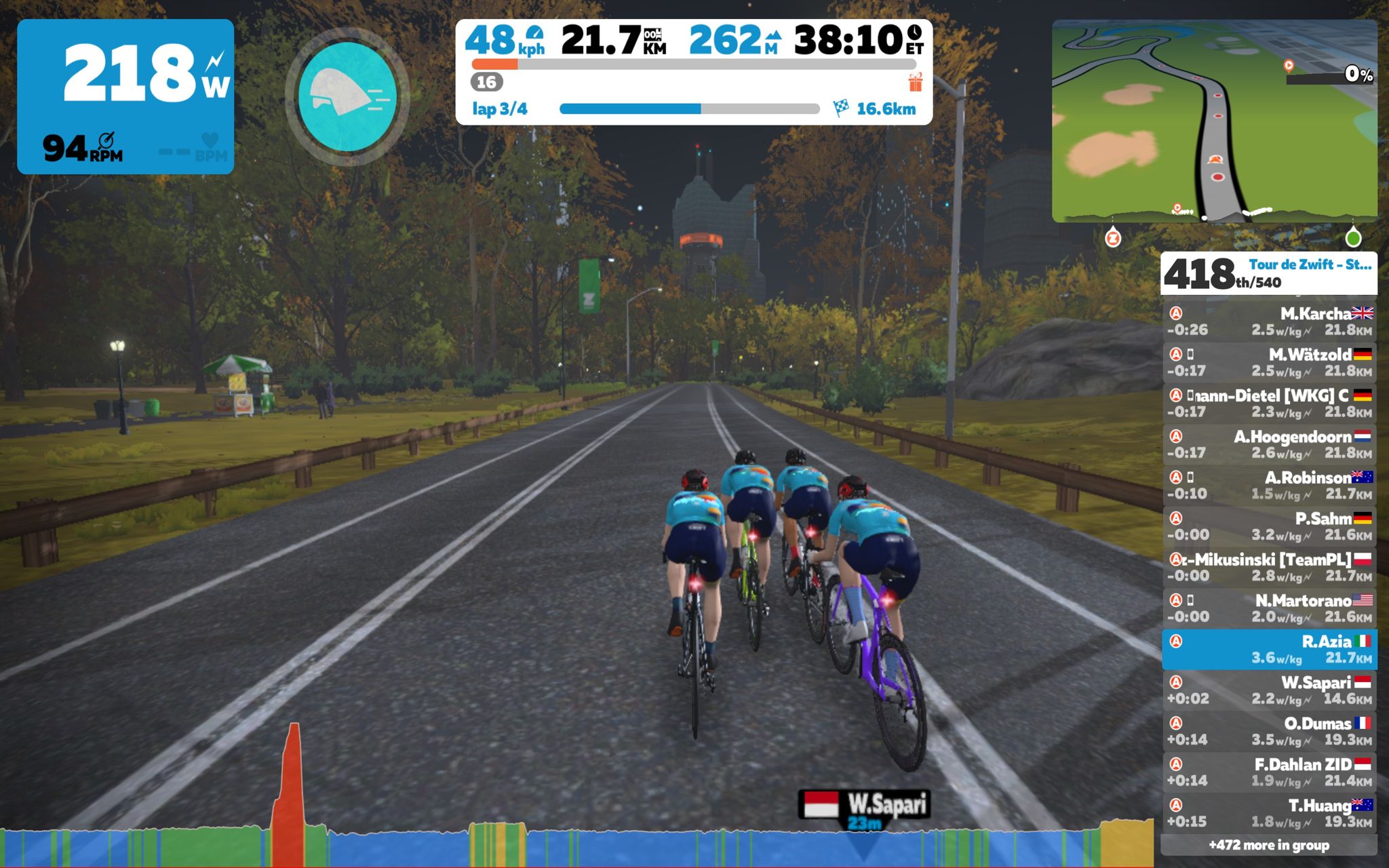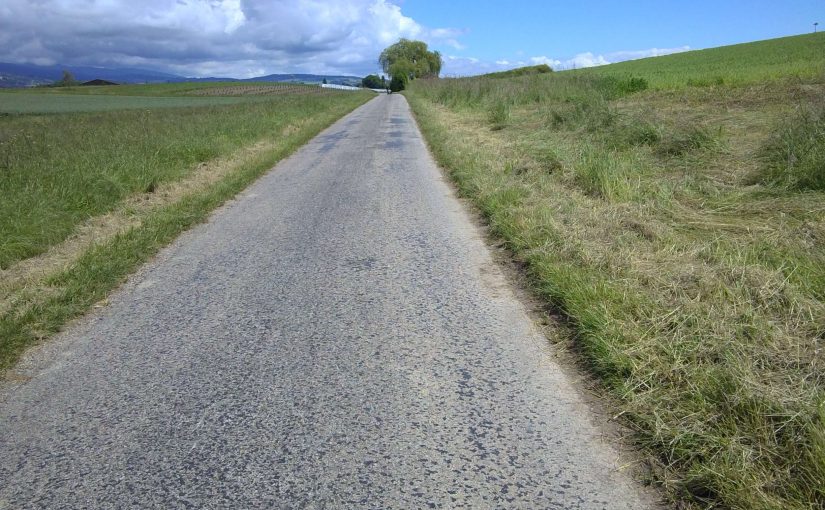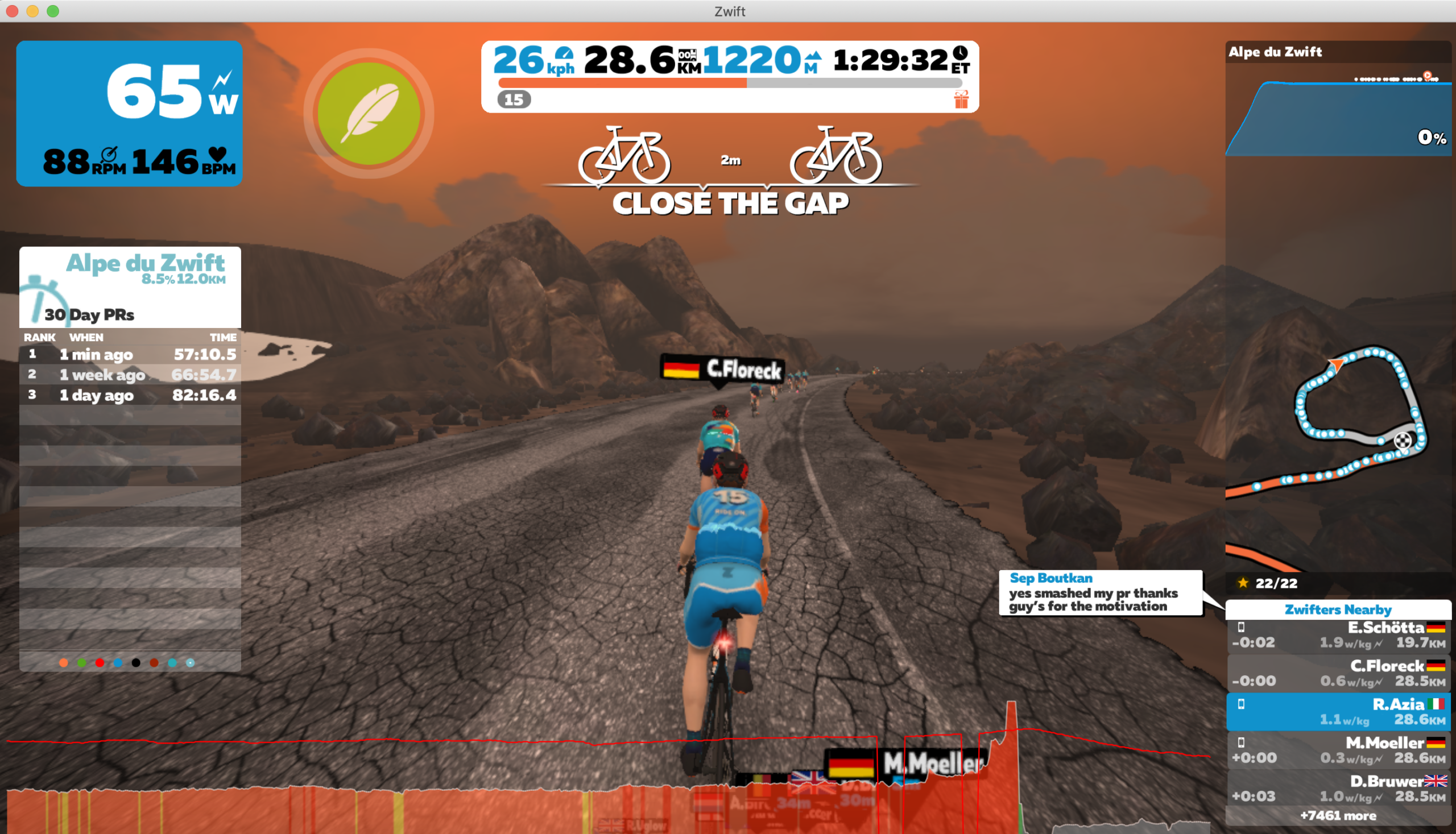Tag: Tour de Zwift
-

Tour de Zwift 2019 complete
Reading Time: 3 minutesThis morning I completed Stage 9 of the Tour de Zwift. I have now finished the challenge. In the process I went from riding on the shorter events during the first stages to taking the long options for at least the last two stages. A slow start before ramping up. I don’t…
-

How to use an Activity Tracker when Cycling
Reading Time: 2 minutesActivity trackers are designed for walking, running, canoeing and activities where you move your arms. Cycling is not one of those sports. Unless you’re cycling on a specialist bike that has handles you’ll be using your legs and your upper body will move very little. I have a workaround. My workaround is…
-

Alpe De Zwift in 57 Minutes And 10 Seconds.
Reading Time: 3 minutesI have ascended the Alpe de Zwift 5 times since i started using Zwift. My first climb took about one and a half hours, and then about one hour and sixteen minutes and finally just 57 minutes. I managed to get down to 57 minutes because I participated in Stage 6 of…
-
Tour de Zwift – Over Half Way Through
Reading Time: < 1 minuteThe 2019 Tour de Zwift event is a 9 event cycling event on Zwift. it takes you on nine different routes across five worlds with hundreds, and in some case more than 2000 participants at a time. Zwift Tour description “…the Tour is a celebration of Zwift and the worlds within.…